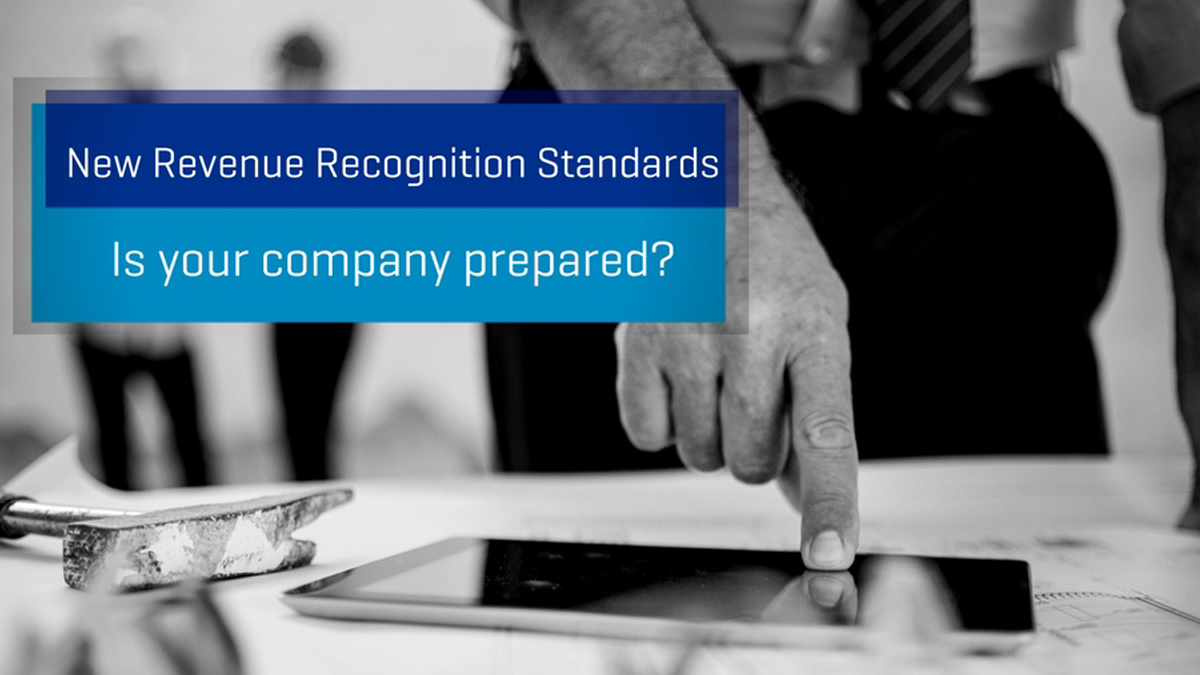
Contractors today deal with challenging projects, often with multiple performance obligations. These megaprojects are frequently bundled together and involve complex financials. The new GAAP revenue recognition standards developed by the Financial Accounting Standards Board are here, and these standards are designed with complex projects in mind. When implemented properly, they offer improved cash flow and better accounting insight, which benefits contractors and customers.
“All of this should make the industry more streamlined in the way money flows and work gets done,” says Wayne Newitts, director of strategic partnerships at Viewpoint.
Although nonpublic entities must begin implementing the new standards for the 2019 calendar reporting year, less than 25 percent of companies are ready to do so. Contractors that don’t start adhering to the new revenue recognition standards risk loss of standing in the marketplace and among creditors—something all contractors will want to avoid.
By taking the appropriate steps to prepare for the new standards, though, and finding construction software solutions that support these efforts, contractors can set themselves up for success in the future.
Viewpoint recently published an e-book that outlines key ways to prepare for the new revenue recognition standards in the construction industry. Here are some of the important steps:

Identify the contract
This first step should be pretty easy for most contractors, since legally-binding contracts are already part of their processes.
Identify the performance obligations within the contract
This second step, on the other hand, will likely be the most challenging. In the past, all parts of a contract were handled together at the end of a job. Under these new standards, separate performance obligations — defined as distinct goods/services delivered by the contract — must be accounted for independently.
Determine the transaction price
Previously, the amount contractors expected to be paid over a contract’s life — including variable performance obligations like penalties and bonuses — were accounted for at the end of a contract. The new revenue recognition standard requires that the contract reflect incentive bonuses and penalties when they’re likely to occur.
Allocate the transaction price
When a contract has one performance obligation, allocating price won’t be too complicated. Things do get a little more complex when multiple performance obligations exist, though. In these cases, contractors should identify the standalone selling price of each project before determining the overall price of the contract.

Recognize the revenue
The good news is that actually recognizing revenue will be simple for contractors because the process for doing so hasn’t changed. The same cost-to-cost-percentage-of-completion method used in the past still works under the new standards.
How a construction ERP can help
The new revenue recognition standards will require some adjustment on the part of contractors, but that adjustment will be much easier if companies have an enterprise resource planning (ERP) technology solution. An integrated, construction-specific ERP connects finance, accounting and operations, making it much easier to share data between teams and effectively collaborate on projects.
We’ve only scratched the surface of the new revenue recognition standard here, so check out the entire “5 Ways to Prepare for New Revenue Recognition Standards” e-book for a closer, more detailed look at the standards and the steps for preparation.
BuiltWorlds partnered with Viewpoint to bring you this article.

Discussion
Be the first to leave a comment.
You must be a member of the BuiltWorlds community to join the discussion.